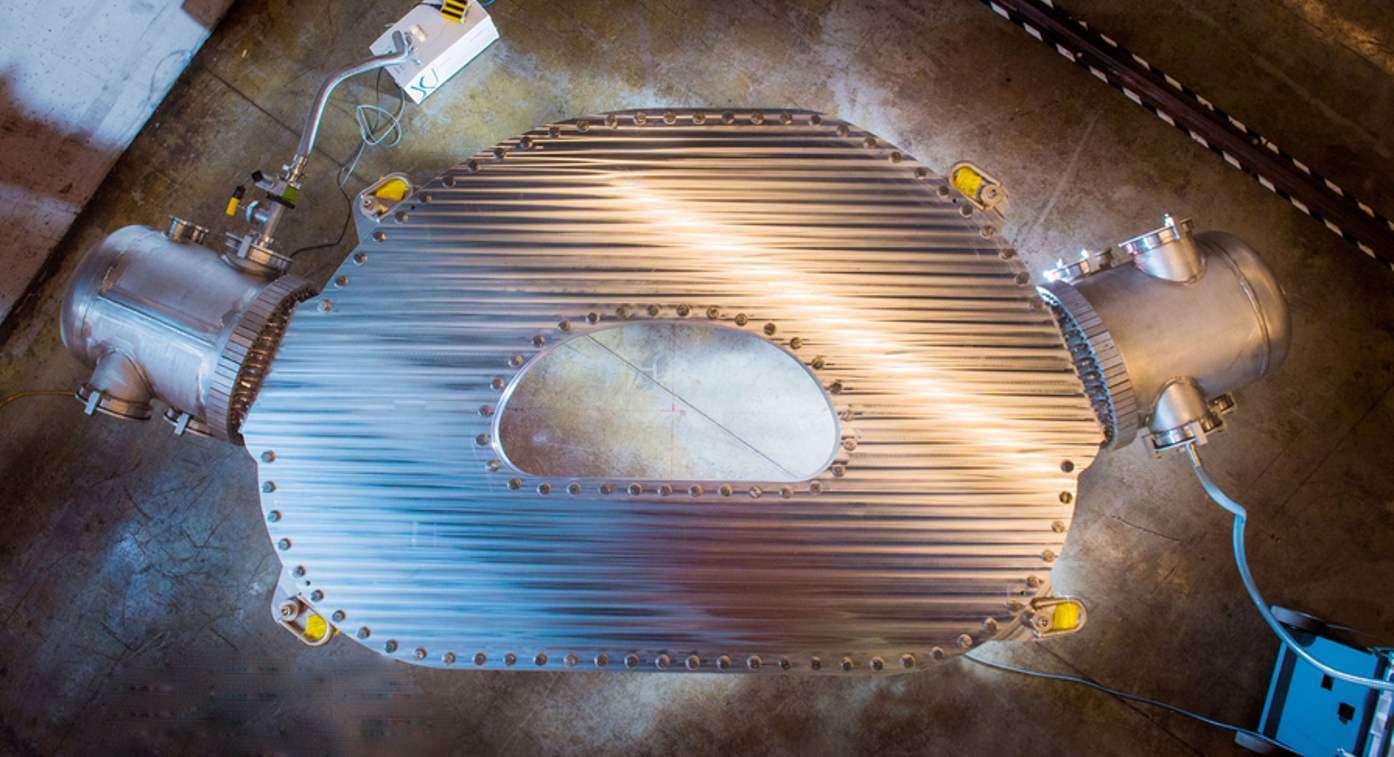Mexico Led the Way For 7 US States to Cooperate in Sharing Water Amid the 22-Year Drought
The 7 Southwest states and Mexico have a 10-year established water sharing agreement for the 22-year drought dropping levels in Lake Mead.

The superconducting magnets which could be a key to powering an efficient nuclear fusion reactor were just turned on in the labs of an American firm.
Commonwealth Fusion Systems (CFS_ generated an electrical field of 20 tesla-the most powerful ever created on Earth; 50,000 times-stronger than the magnetosphere-for five hours.
This gave scientists at CFS the confidence to say that a working prototype of their fusion reactor could be ready by 2025; a huge leap forward from a government paper that reckoned on a 2040 arrival time.
Nuclear fusion is perhaps the world's most dynamic engineering challenge, and the magnets are one method by which humans may be able to make it work. With them, CFS believe the reactors of the future could be small, and dramatically cheaper than the billions Western governments are currently spending on fusion projects.
The goal of any reactor is to create a plasma-the forth state of matter, which is essentially a superheated gas. The heavy isotopes inside a hydrogen atom, deuterium and tritium, are heated inside the reactor to hundreds of millions of degrees until they convert to helium. The energy they give off is converted to electricity.
If such a powerful machine can produce more electricity than it uses, unlimited clean energy can be achieved, which means it doesn't matter if the sun is shining or the wind is blowing, it means coal, oil, and gas can all remain in the ground, that never again would a war be fought over oil resources, and that global climate change could be rapidly scaled back.
In fact, the CFS research and development team boasts that their reactor will be able to turn a glass of water into the electricity usage of one human for their entire lifetime.
Superconducting magnets make achieving those extreme temperatures much easier. 18 of CFS' magnets will be arranged like a big metal donut to create pressures in the fusion chamber, known as a tokamak, of up to two-times as much as at the deepest point in the ocean. This immense squeezing causes the immense heat needed for fusion to occur.
"Three years ago we announced a plan to build a 20-tesla magnet, which is what we will need for future fusion machines," says Bob Mumgaard, CFO of CFS, in a story to the MIT university press.
"We now have a platform that is both scientifically very well-advanced, because of the decades of research on these machines, and also commercially very interesting. What it does is allow us to build devices faster, smaller, and at less cost."
Commonwealth Fusion Systems (CFS_ generated an electrical field of 20 tesla-the most powerful ever created on Earth; 50,000 times-stronger than the magnetosphere-for five hours.
This gave scientists at CFS the confidence to say that a working prototype of their fusion reactor could be ready by 2025; a huge leap forward from a government paper that reckoned on a 2040 arrival time.
Nuclear fusion is perhaps the world's most dynamic engineering challenge, and the magnets are one method by which humans may be able to make it work. With them, CFS believe the reactors of the future could be small, and dramatically cheaper than the billions Western governments are currently spending on fusion projects.
The goal of any reactor is to create a plasma-the forth state of matter, which is essentially a superheated gas. The heavy isotopes inside a hydrogen atom, deuterium and tritium, are heated inside the reactor to hundreds of millions of degrees until they convert to helium. The energy they give off is converted to electricity.
If such a powerful machine can produce more electricity than it uses, unlimited clean energy can be achieved, which means it doesn't matter if the sun is shining or the wind is blowing, it means coal, oil, and gas can all remain in the ground, that never again would a war be fought over oil resources, and that global climate change could be rapidly scaled back.
In fact, the CFS research and development team boasts that their reactor will be able to turn a glass of water into the electricity usage of one human for their entire lifetime.
Superconducting magnets make achieving those extreme temperatures much easier. 18 of CFS' magnets will be arranged like a big metal donut to create pressures in the fusion chamber, known as a tokamak, of up to two-times as much as at the deepest point in the ocean. This immense squeezing causes the immense heat needed for fusion to occur.
"Three years ago we announced a plan to build a 20-tesla magnet, which is what we will need for future fusion machines," says Bob Mumgaard, CFO of CFS, in a story to the MIT university press.
"We now have a platform that is both scientifically very well-advanced, because of the decades of research on these machines, and also commercially very interesting. What it does is allow us to build devices faster, smaller, and at less cost."
The magnets are wrapped with 300 kilograms (660 pounds) of superconducting tape made from a barium copper oxide.
This tape has taken decades to develop, and when cooled to -253 °C, which used to take a refrigerator the size of a house, it removes all the natural barriers to superconductivity, and can easily handle nearly all of the 40,000 amps passing through the tokamak at any one time, and very efficiently.
All of this work, and the successful test, means that CFS can begin work on their SPARC, a sort of miniature version of a full-scale nuclear fusion plant. The facility to house the SPARC is already under construction.
(WATCH the MIT video about the magnet and how it works below.)
POWER UP the Good News-Share This Piece…
Be the first to comment